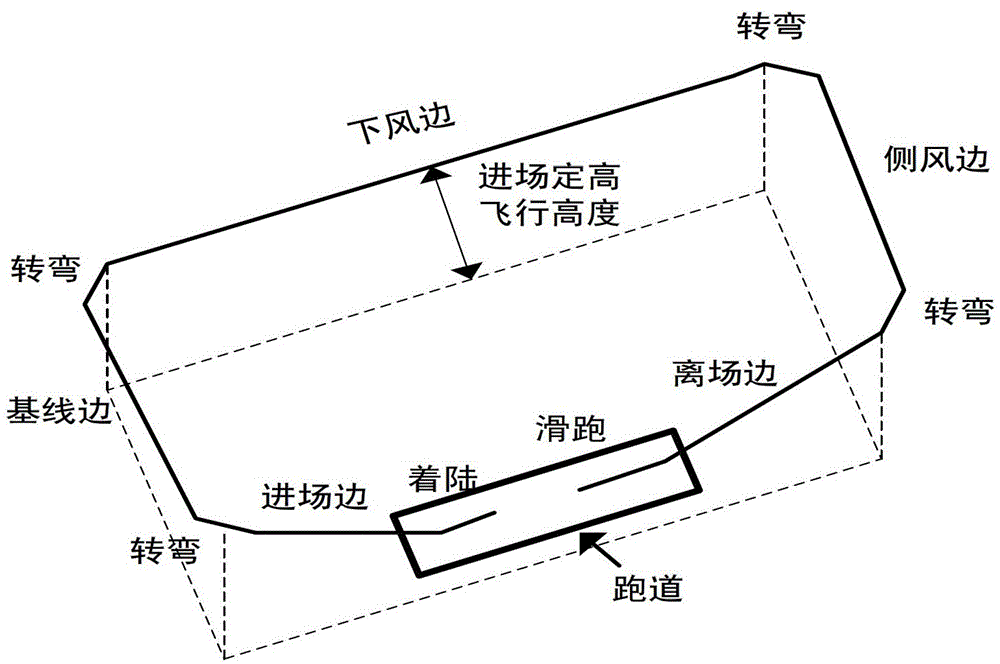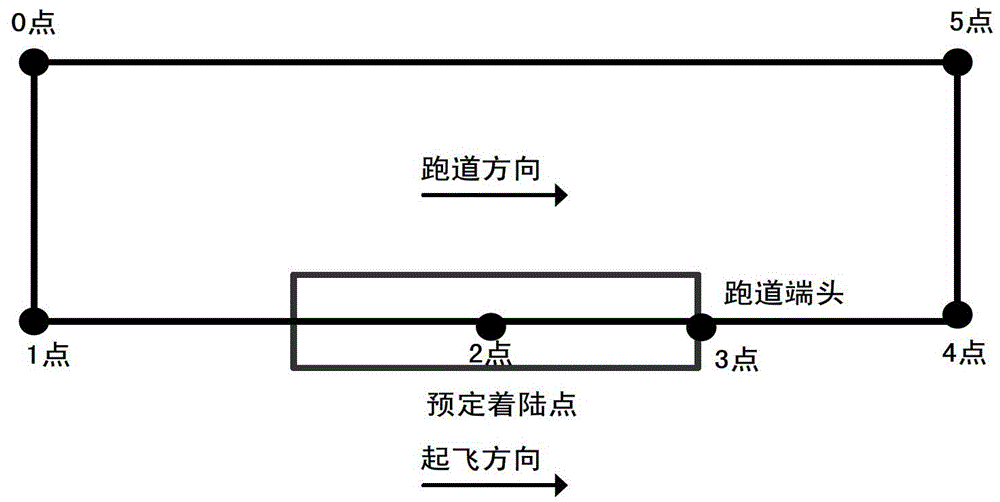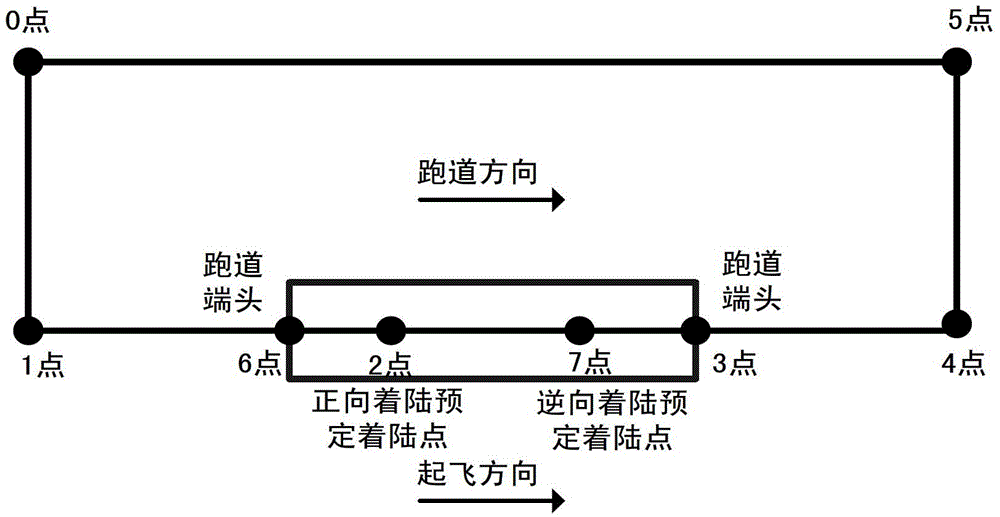A UAV take-off and landing routing method suitable for terrain constraints
A constraint condition, UAV technology, applied in the direction of aircraft traffic control, instruments, traffic control systems, etc., can solve the problems of restricting the effective area of the airport, restricting the symmetrical layout of the pentagonal take-off and landing routes, and the arrangement of waypoints. Safety assurance ability, weakened coupling effect, easy to operate effect
- Summary
- Abstract
- Description
- Claims
- Application Information
AI Technical Summary
Problems solved by technology
Method used
Image
Examples
Embodiment
[0057] Such as Image 6 As shown, consider a UAV approaching the field at a fixed altitude and flying height H=300m, the UAV track inclination angle λ=-20, the waypoint switching distance D=200m, and the longest time required for landing gear retraction T=10s , the flight speed of the UAV when retracting the landing gear is v=40m / s, the airport runway is 800m long and 30m wide, and the terrain obstacles in the front left of the route planning area are dense, which is not conducive to route planning. Adopt the method provided by the present invention to arrange the take-off and landing routes of the above-mentioned unmanned aerial vehicle approach, the specific steps are as follows:
[0058] Step 1: Select the side of the airport with a larger clearance ratio as the direction of the takeoff and landing route arrangement. Such as Image 6 As shown, that is, select the side without mountains as the route planning area.
[0059] Step 2: According to the route arrangement method...
PUM
 Login to View More
Login to View More Abstract
Description
Claims
Application Information
 Login to View More
Login to View More - R&D Engineer
- R&D Manager
- IP Professional
- Industry Leading Data Capabilities
- Powerful AI technology
- Patent DNA Extraction
Browse by: Latest US Patents, China's latest patents, Technical Efficacy Thesaurus, Application Domain, Technology Topic, Popular Technical Reports.
© 2024 PatSnap. All rights reserved.Legal|Privacy policy|Modern Slavery Act Transparency Statement|Sitemap|About US| Contact US: help@patsnap.com










